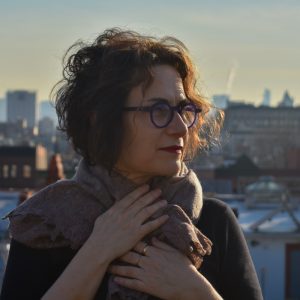About

My scholarship engages with cultural histories, aesthetics, and experiences of the moving image through specific geo-historical junctures. Postwar Italy has been a principal focus as part of a wide-ranging exploration of cinematic locations, the sense of place, and the movie studio as, itself, a place in history. Quite distinct has been my engagement with the human visage as privileged site of representation. My book, The Face on Film, examined the equivocal visuality and illegibility of the face in some of its most compelling cinematic incarnations.
My first book, Italian Locations, offered a revisionist reading of cinema’s postwar confrontation with Italy’s natural and urban landscapes, exploring neorealism’s peripheral sites, the significance of ruins both ancient and recent, the refuse of modernity in the wake of Fascism, and the predicament of reconstruction. I am now completing a book manuscript, provisionally titled Cinecittà at War, and under contract with Columbia University Press. Based on striking discoveries in world archives, it excavates an obfuscated history of the Roman studio during World War II and its aftermath, when occupying armies, prisoners of war, partisans, war criminals, intelligence agents, and refugees from across the globe crossed paths the Fascist-built, walled and gated miniature city soon to gain fame as “Hollywood on the Tiber.” Cinecittà at War interlaces perspectives rarely joined in film scholarship, radically altering received understandings of the relationship between cinema and war, entertainment and propaganda, the manufactured irreality of the studio and urgent human reality in a time of global crisis.
Across a range of essays and lectures I have also reflected, in recent years, on the coupling of history and poetics, primarily in documentary films, to trace how the affective, even corporeal, appeal of the moving image and its formal devices inflect the ethical charge of such work as Samuel Fuller’s 1945 footage of Falkenau, Cecilia Mangini’s tapestry of women’s labor in Essere donne/Being Women (1965), and David Perlov’s interrogation of photography in Memories of the Eichmann Trial (1979).
My work in all its aspects is informed by a continued engagement with questions of realism and modernism, the postwar “crisis of representation,” and cinema’s relationship to traditional (even archaic) arts and media. While I explore the historical, material, and social experience of cinema, I am unapologetically committed to the study of film as an art, in reciprocity with other pictorial and poetic forms.
After many commuting years—first as faculty member at Yale’s Department of Art History, then at the University of Chicago, where I earned my tenure in Cinema and Media Studies—I now live between Rome and New York City, and have been fortunate to find opportunities for guest teaching, invitations to lecture, and funds for new research. The Cinecittà project has won me distinguished fellowships from the American Council of Learned Societies, the National Endowment for the Humanities, and the Guggenheim Foundation.
* Field specialties: Italian cinema; landscape and location; classical film theory; image theory; narratology & poetics; modernism & realism
